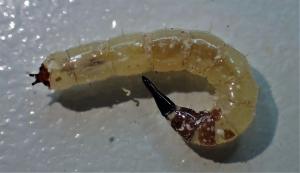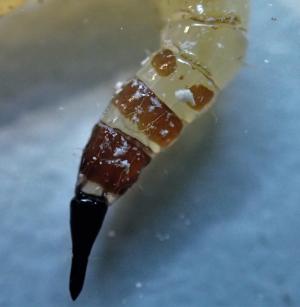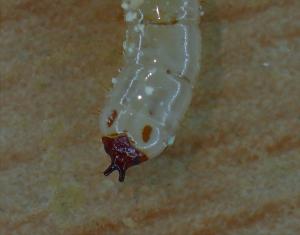Three species known in the UK, two of which are confined to Scotland, and one of which has only been seen (as an adult) once in 1913. However, a potential fourth species was recorded as a larva, that seemed not to match the known species, but could not be reared through and has not been found again.
The larvae are found under the bark of dead trees, and are predators of other insects. They can be found in the winter, but for rearing it is recommended that they are collected in early spring just before they are due to pupate in April/May.
The name "awl-fly" comes from the shape of the head of the larvae, which is similar to an awl.
Xylophagus ater (Common Awl-fly)
Photos by Geoff Wilkinson, who describes this as "a beast of a larva that is readily found under bark of decaying fallen conifers and broadleaves".
Dorsal surface of larva | Head of larva |
Tip of abdomen |



